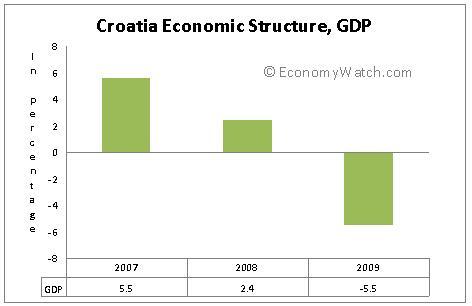Croatia Economic Structure
Please note that we are not authorised to provide any investment advice. The content on this page is for information purposes only.
Table of Contents
Croatia Economic Geography
Croatia is geographically diverse, encompassing a landscape of flat plains along Hungarian border, low mountains and highlands near Adriatic coastline and islands, with a Mediterranean and continental climate, suitable for tourism as
Croatia’s economiy is heavily dependent on tourism.
The tourism industry in Croatia helped its economy recover from the civil war in 1991-95 and attracted good foreign investment. In 2010, the total FDI was US$33.143 billion, showing a positive increase from US$27.17 billion in 2008.
Croatia Economic Geography
Croatia is geographically diverse, encompassing a landscape of flat plains along Hungarian border, low mountains and highlands near Adriatic coastline and islands, with a Mediterranean and continental climate, suitable for tourism as
Croatia’s economiy is heavily dependent on tourism.
The tourism industry in Croatia helped its economy recover from the civil war in 1991-95 and attracted good foreign investment. In 2010, the total FDI was US$33.143 billion, showing a positive increase from US$27.17 billion in 2008.
Croatia also posses natural resources such as oil, some coal, bauxite, low-grade iron ore, calcium, gypsum, natural asphalt, silica, mica, clays, salt and hydropower.
Croatia Population & Labor Force
The population in Croatia grew insignificantly in 2010, standing at 4.429 Million in 2010, and expecting 0% growth. The age structure of the population is; 15.6 percent aged 1-14 years, 67.5 percent aged 15-64 years and 17 percent aged 65 years and over.
1.773 million of the population is employed in the workforce with 9.5 percent unemployed in 2010.
The most recent 2008 figures show 5 percent of the workforce employed in agriculture, 31.3 percent in industry and 63.6 percent in services.The following graph shows (in percentage) the contribution of the different sectors to employment:

In 2009, the unemployment rate in Croatia increased to 15.2 percent from 13.7 percent in 2008. Public debt also increased to 47.7 percent in 2010, in contrast to 42.7 percent in 2008. The budget felt the pressure as well, with lower revenues than expenditures. According to the estimates, the revenues in 2009 stood at only US$22.77 billion, while expenditures were reported at around US$25.09 billion. Investments accounted for 25.3 percent of the total GDP in 2010.
Croatia Industry Sectors
Croatia’s industrial production growth was down 3.9 percent in 2010.
The Croatian industry is well developed and includes:
- chemicals and plastics
- machine tools and fabricated metal
- electronics
- pig iron and rolled steel products, aluminum, paper, wood products and construction materials
- textiles
- shipbuilding
- petroleum and petroleum refining
- food and beverages
- tourism
Although the Croatian economy is dependent on the services sector which contributed 65.7 percent to GDP in 2010, the Croatian industry sector also plays an important role in contributing towards the national GDP accounting for 28.1 percent.
Croatia Economic Structure
Croatia’s economy recorded a GDP (PPP) of US$ 77.992 billion in 2010, down from $83.57 billion in 2008, ranking Croatia No. 77 in the world and is expected to increase in the years to come. Had it not been for the recession, the Croatian economy would have marched ahead with huge growth. The graph below shows how the economy has been performing since 2007 (in percentage).





